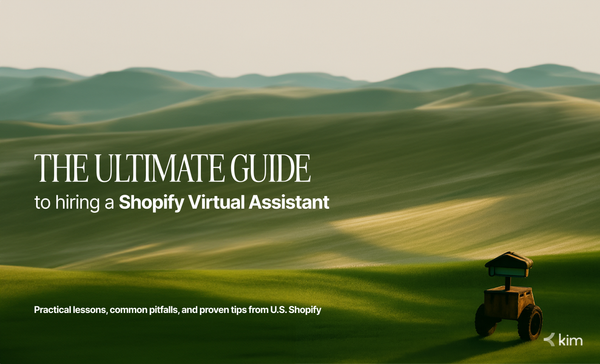Stop the Exodus: Using CRM to Decode the Psychology of Customer Churn
Stop Customer Churn! Use CRM data to predict churn & create targeted campaigns to win back customers. Learn how Kim.cc uses CRM for success.

Did you know a staggering 80% of businesses lose customers due to bad experiences? That's right, four out of five customers you acquire could potentially walk away. This phenomenon, known as customer churn, is a silent killer for businesses. It eats away at your revenue stream and requires constant customer acquisition efforts just to maintain a steady state.
But what if you could predict when a customer is about to churn? What if you could identify the warning signs and intervene before they decide to leave? This is where Customer Relationship Management (CRM) software becomes your secret weapon.
Key Takeaways
- Warning Signs of Churn
- Root Causes of Churn
- Proactive Churn Prevention Strategies
At Kim.cc, we believe in fostering strong customer relationships. Customer churn is a nightmare for any business, but with the right tools, we can turn the tide. CRM data analysis allows us to see beyond the surface and understand the psychology behind customer churn.
Warning Signs of Churn
Your CRM is a treasure trove of customer behavior data. By analyzing this data, you can identify customers who might be on the verge of churning. Here are some key warning signs to watch out for:
- Decreased Usage: Are certain customers using your product or service less frequently? A sudden drop in activity could indicate they're finding value elsewhere.
- Abandoned Carts: Are customers adding items to their cart but not completing the purchase? This could be a sign of frustration with the checkout process or pricing.
- Zero Support Interactions: While some customers might be self-sufficient, a complete lack of support interactions could indicate they're struggling in silence.
- Unopened Emails: Are your marketing emails consistently left unopened? This could suggest a disconnect between your messaging and customer needs.
By identifying these red flags within your CRM, you can prioritize outreach to at-risk customers. Kim emphasizes, "Early detection is key. The sooner you identify a potential churner, the more effective your intervention will be."
Root Causes of Churn
Data tells a story, but it doesn't tell the whole story. Understanding the "why" behind customer churn requires digging deeper. Here's where feedback, surveys, and support interactions within your CRM become invaluable.
- Analyze Customer Feedback: Look for recurring themes in customer reviews and support conversations. Are there common pain points or frustrations that need to be addressed?
- Utilize Customer Surveys: Conduct targeted surveys to understand customer satisfaction levels and identify areas for improvement.
- Review Support Interactions: Analyze how long it takes to resolve customer issues and the overall tone of support interactions.
Kim stresses the importance of actively listening to customer concerns. "Your CRM should be a two-way street. By providing avenues for feedback and actively listening to customer voices, you can gain invaluable insights into the root causes of churn."
Proactive Churn Prevention Strategies
Once you identify at-risk customers and understand the reasons behind their potential churn, it's time for action. Here are some proactive strategies you can implement:
- Personalized Offers: Use CRM data to segment your customer base and tailor special offers or discounts to address specific needs and concerns.
- Loyalty Programs: Reward loyal customers with points, exclusive benefits, or early access to new features. This incentivizes them to stay and creates a sense of community.
- Improved Customer Support: Invest in training your support team to provide exceptional service. A positive support experience can turn a frustrated customer into a loyal advocate.
By implementing these proactive strategies, you can significantly reduce customer churn. Kim believes that a CRM is more than just a data management tool; it's a powerful platform for building stronger customer relationships. "By using CRM data to understand customer behavior and address their needs proactively, we can transform churn into customer loyalty," she says.
Remember, customer churn is a battle you can win. By harnessing the power of CRM data analysis and implementing proactive retention strategies, you can create a loyal customer base that fuels the success of your business.




